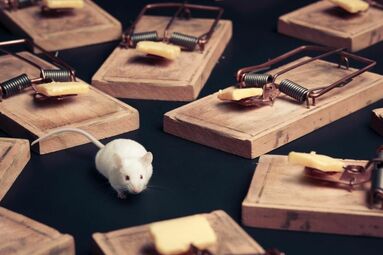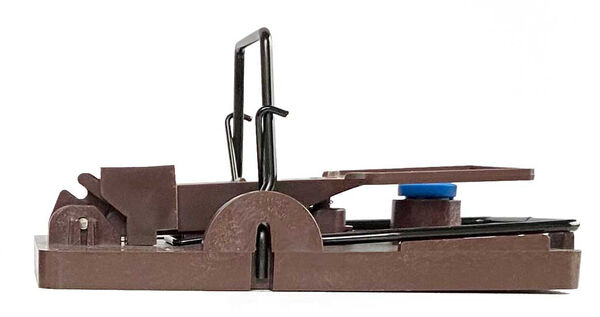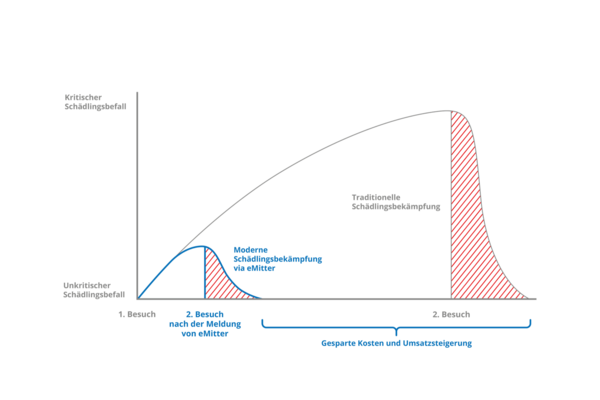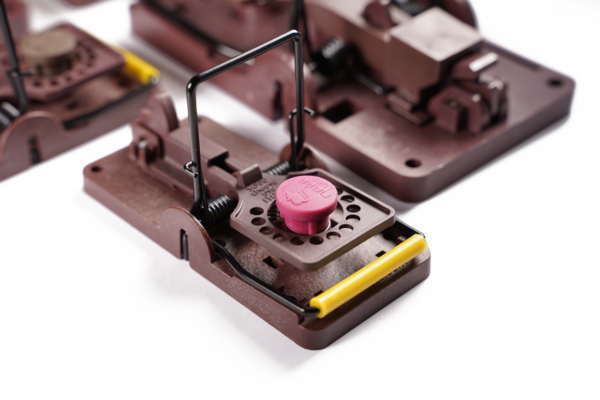BEATER TRAPS FOR RATS AND MICE - 8 QUALITY FEATURES FOR PROFESSIONALS
- Verfasst von Daniel Schröer
- 7 min. Lesezeit
- Pest Control

Often, tried-and-true methods are forgotten before they make a comeback. This was also the case with the beating trap. Over the past decades, it has been replaced by rodenticides (i.e. rat poisons), which initially appear less complicated in their application and eliminate the need for the step of trap checking and cleaning. However, there is now much scientific evidence of how harmful rat poison is to the environment and non-target animals. Therefore, permanent baiting with poisons against rats and mice is no longer permitted by law.
Especially for professional use, an alternative was needed. The answer: sustainable, digital blow traps. In this article, we explain what is important in the application:
- How can good impact traps be recognized?
- How can rats and mice be controlled more effectively with digital beat traps?
IMPACT STRENGTH, IMPACT BRACKET AND STIFFNESS - HOW TO RECOGNIZE GOOD IMPACT TRAPS

The same applies to impact traps: if you buy cheap, you buy expensive. The very cheap offers warp when snapped and disappoint with an unreliable kill rate. This not only costs money when the traps have to be replaced, but also means unnecessary extra work for the pest controller. Good traps should last for many years.
And if you want to integrate the beat traps into a digital system (more on this in the next chapter), good quality is even more worthwhile. You can recognize high-quality impact traps by a combination of the following eight factors:
1. high impact
Of course, any pest that triggers the trap, should also be killed immediately. On the one hand, this avoids unnecessary animal suffering. On the other hand, traps with a certified high impact force do not require daily inspection. A humane kill and a high kill rate were certified for the Gorilla Traps according to §18 Infection Protection Act.
2. low tolerance in the impact force
If the impact force of a trap varies unintentionally (i.e. has too high a tolerance), there is no reliance on killing the pest. Often, a high tolerance in the impact force results from cheap materials or a suboptimal design – thus occurs primarily with low-cost suppliers.
3. stiffness of the material
To ensure that the trap does not warp immediately after the first release and lasts for years, the material must have good rigidity. This also ensures that the energy released during triggering is not lost. Thus, the stiffness in turn supports the impact force.
4. sturdy hooks to hold the bracket in place.
If you combine a high impact force with strong materials, the opened trap is under enormous tension. To prevent the shackle from coming loose prematurely, the hooks at the back of the trap must be of a stable design.
5. pick up the appropriate bait
Surely you have your favorite baits. So when buying new traps, make sure that they fit in any case. This sounds obvious, but is often enough overlooked.
6. step setting according to gram numbers
To exclude bycatch, e.g. of protected species, a step setting is recommended. This determines from how many grams the trap is triggered. Gorilla Traps, for example, have three levels: 1=mouse, 2=rat + mouse, 3=rat.
7. coating of the beater bracket
The striking bar is a weak point in many traps and corrodes quickly. Then, of course, punch is lost. To prevent this from happening, the strikers of high-quality traps are coated.
8. option to use as a digital beat trap
More and more companies are now turning to digital pest control. But not all traps have the necessary sensors and can be equipped with chips. If you are looking for digital beater traps, we recommend taking a look at our eMitter traps.
HOW CAN RATS AND MICE BE CONTROLLED MORE EFFECTIVELY WITH DIGITAL BEATER TRAPS?
For a long time now, professional pest control has been about more than just responding to acute pest infestations. Instead, concepts such as “Integrated Pest Management” (IPM) and “Hazard Analysis and Critical Control Points” (HACCP) pursue the goal of preventing a pest infestation and identifying trends at an early stage.
This is exactly where digital systems for pest control come in. Strike traps are equipped with sensors and chips and send a signal to a gateway when triggered. Depending on the equipment, an integrated camera can also take a photo of the pest. The gateway transmits the information to a central system that can notify responsible parties via app or SMS, for example. In most cases, this digital system is also accompanied by data from monitoring boxes and cameras for observation. This results in many advantages:
- Boxes with beat traps no longer need to be checked daily, but only when you have reported a catch.
- All information is automatically documented digitally and can be used for trend analysis and threshold analysis.
- With audits, all information is available in one place. Questions from the examiner can be answered after a few clicks.
High-quality, digital impact traps enable proactive pest control – in many cases, without the use of poisons at all. For more on the topic, see this post and our Introduction to Digital Pest Control webinar series.

SUMMARY

In 2003, we at Futura Germany set out to find good alternatives to rodenticides. The environmental impact of poisons was still largely underestimated or downplayed at the time, but it was foreseeable that regulations and laws would change sooner or later. And one thing struck us during our search: The solutions on the market were not convincing.
Therefore, we started to develop our own traps with the Gorilla Tra ps. The daily inspection of beat traps (sometimes many hundreds in one farm) cost pest controllers a lot of time. So a few years later, we developed digital solutions.
If you have any questions about the use of beat traps or digital pest control, just contact us!


